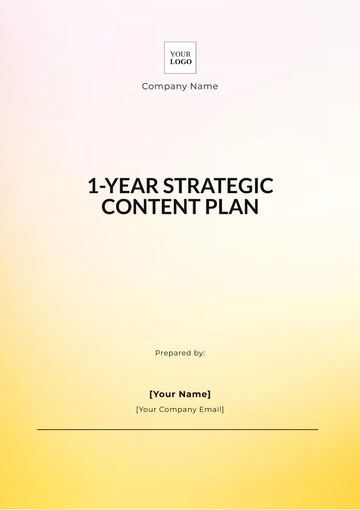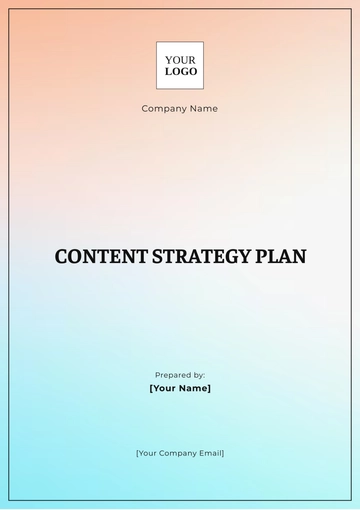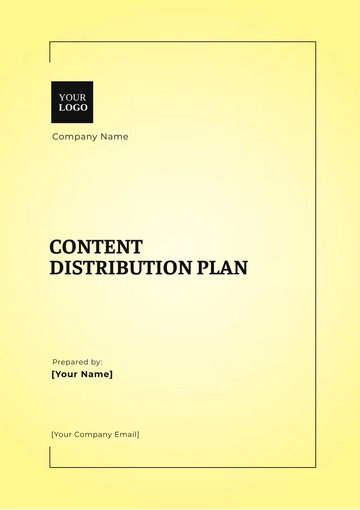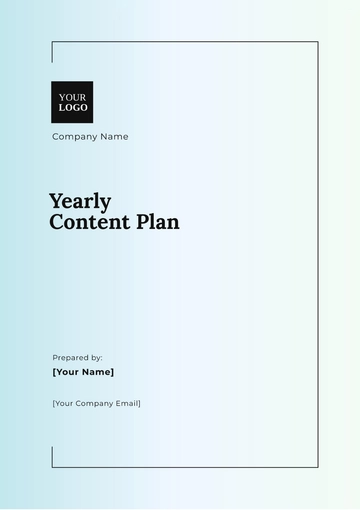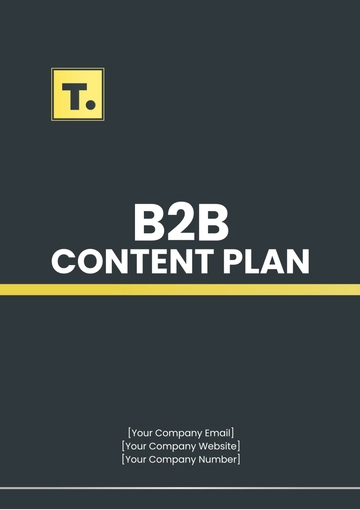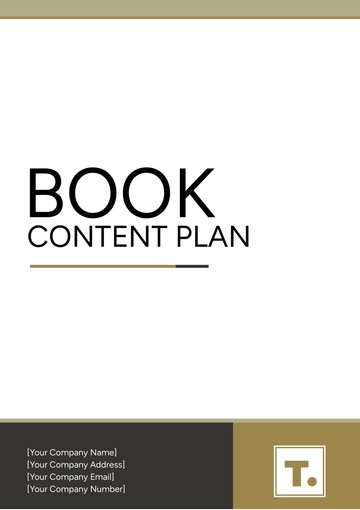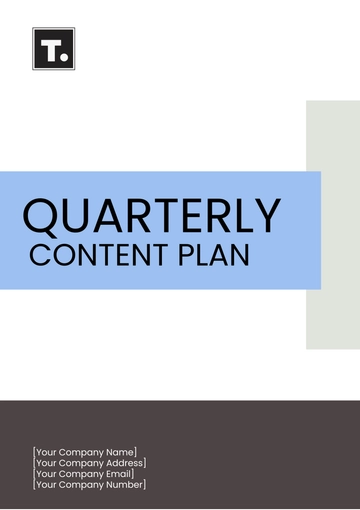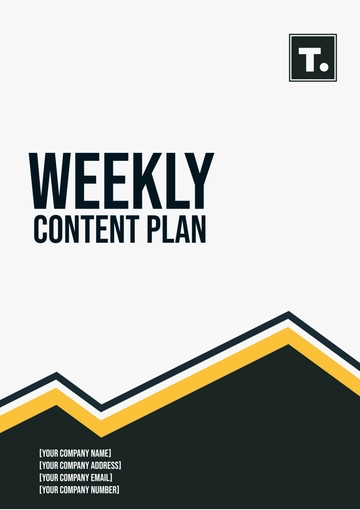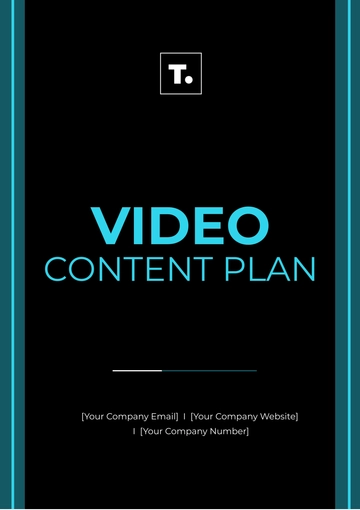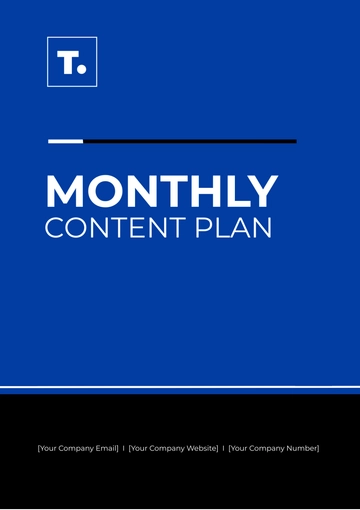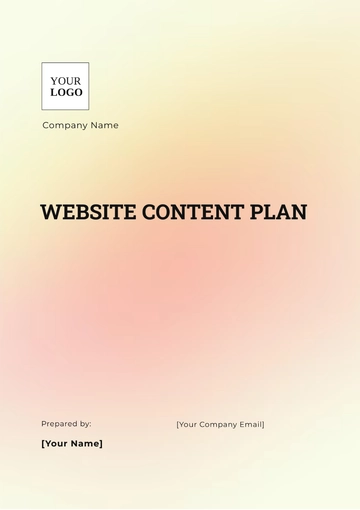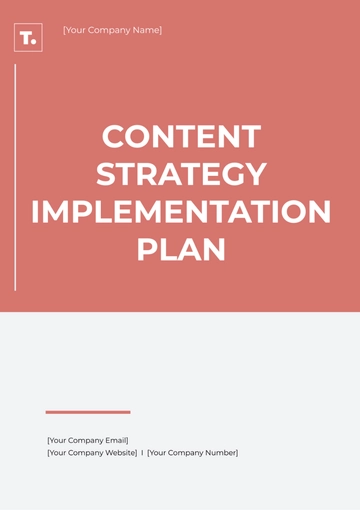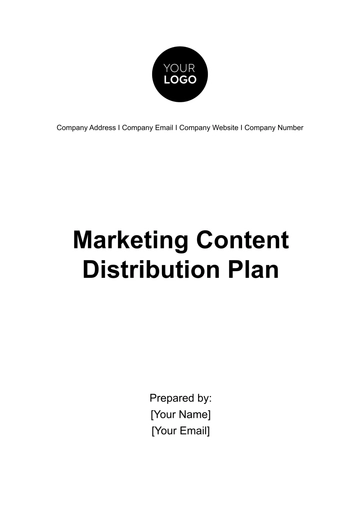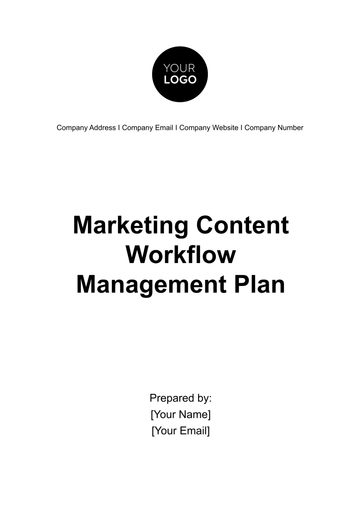Free 1-Year Strategic Content Plan
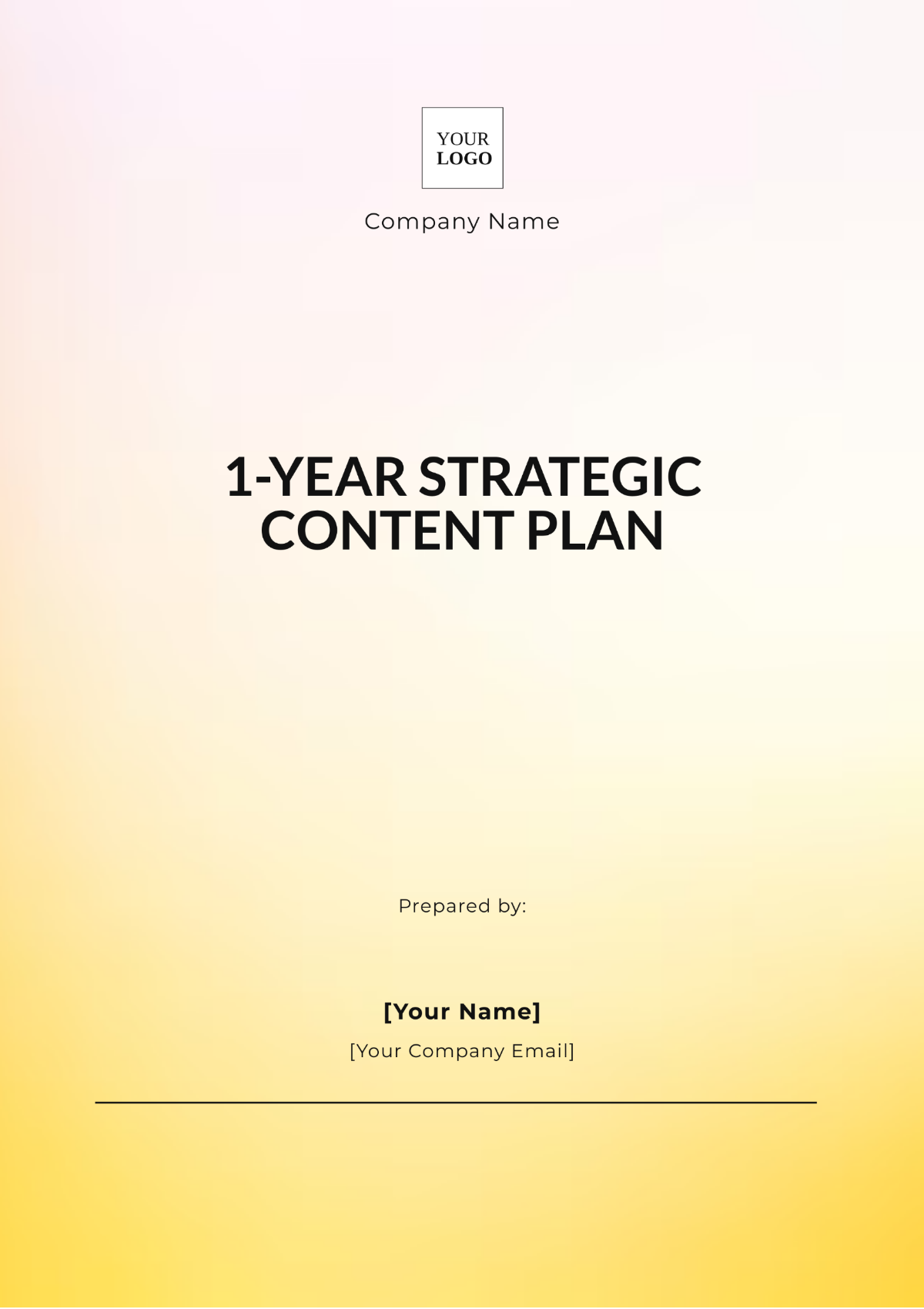
This comprehensive 1-Year Strategic Content Plan focuses on optimizing content performance by enhancing engagement, improving SEO, increasing conversions, and refining the overall content strategy. The plan includes regular audits, strategic actions, and a detailed content calendar to guide [YOUR COMPANY NAME] through a year of effective content management.
Content Optimization Goals
Objective | Details |
|---|---|
Increase Engagement | Boost user interaction metrics, such as likes, shares, and comments, by 25% through targeted content adjustments. |
Enhance SEO Performance | Improve organic search rankings for key terms, aiming to move up by 10 positions, by refining on-page and off-page SEO elements. |
Improve Conversion Rates | Increase the conversion rate of targeted content by 15% through optimized calls-to-action, landing pages, and user journeys. |
Refine Content Strategy | Continuously assess and adjust the content strategy based on performance analytics and audience feedback to better align with business objectives. |
Content Audit Schedule
Date | Activity |
|---|---|
January 15, 2050 | Conduct initial content audit |
July 15, 2050 | Perform mid-year content review |
December 15, 2050 | Conduct end-of-year content audit |
Description:
Initial Content Audit (January 15, 2050): Evaluate existing content to identify strengths, weaknesses, and areas for improvement. Review metrics such as engagement rates, SEO performance, and conversion data.
Mid-Year Content Review (July 15, 2050): Assess progress towards goals, adjust strategies based on mid-year performance data, and implement necessary changes.
End-of-Year Content Audit (December 15, 2050): Conduct a comprehensive review of all content efforts for the year. Analyze performance, determine what worked well, and identify opportunities for further optimization.
Content Optimization Actions
Quarter | Actions |
|---|---|
Q1 | Review and update content based on SEO audit results |
Q2 | Implement new content formats and strategies based on engagement metrics |
Q3 | Refine calls-to-action and conversion paths |
Q4 | Analyze content performance data and adjust strategy for the upcoming year |
Description:
SEO Review and Update (Q1): Use insights from the SEO audit to enhance content, including keyword optimization, meta descriptions, and internal linking.
New Formats and Strategies (Q2): Introduce innovative content formats like videos, infographics, and interactive elements to boost engagement based on Q1 performance metrics.
Conversion Optimization (Q3): Focus on optimizing calls-to-action, improving user paths, and testing different strategies to increase conversion rates.
Performance Analysis and Strategy Adjustment (Q4): Conduct a thorough analysis of content performance throughout the year and make necessary adjustments to the strategy for the next year.
Content Calendar: January to June
Month | Content Focus | Key Actions |
|---|---|---|
January | SEO Optimization | Update meta tags, headlines, and keywords to enhance SEO. Conduct a keyword analysis and optimize content for new terms. |
February | User Engagement | Introduce interactive content elements like polls, quizzes, and user-generated content to increase engagement. |
March | Conversion Optimization | A/B test calls-to-action, landing pages, and lead forms to determine the most effective conversion strategies. |
April | Content Quality Improvement | Review and enhance existing content for clarity, relevance, and overall quality. Address any outdated or underperforming content. |
May | Performance Analysis | Analyze content performance metrics, including engagement rates, SEO rankings, and conversion data. Adjust strategies based on findings. |
June | Mid-Year Strategy Review | Evaluate progress towards annual goals, review mid-year performance data, and adjust the content strategy as needed. |
Content Calendar: July to December
Month | Content Focus | Key Actions |
|---|---|---|
July | New Content Formats | Experiment with new content formats such as video series, podcasts, or interactive infographics. |
August | SEO Content Refresh | Update and optimize older content to align with the latest SEO best practices and trends. |
September | User Feedback Integration | Collect and integrate user feedback into content updates to ensure relevance and address user needs. |
October | Pre-Year-End Optimization | Prepare content for maximum impact by optimizing for upcoming trends and seasonal factors. |
November | Performance Review and Adjustment | Analyze performance data from the year and make final adjustments to content strategies. |
December | Annual Content Strategy Review | Review the entire year's content strategy, assess achievements, and develop the plan for the upcoming year. |
This strategic content plan provides a comprehensive framework for [YOUR COMPANY NAME] to optimize content effectiveness throughout the year, ensuring alignment with performance goals and audience engagement.
- 100% Customizable, free editor
- Access 1 Million+ Templates, photo’s & graphics
- Download or share as a template
- Click and replace photos, graphics, text, backgrounds
- Resize, crop, AI write & more
- Access advanced editor
Optimize your content strategy with our 1-Year Strategic Content Plan Template from Template.net. This customizable and editable template, designed for seamless use, ensures your content calendar is always organized. Utilize the AI Editor Tool for effortless modifications, making it easy to tailor the plan to your specific needs and goals.
You may also like
- Finance Plan
- Construction Plan
- Sales Plan
- Development Plan
- Career Plan
- Budget Plan
- HR Plan
- Education Plan
- Transition Plan
- Work Plan
- Training Plan
- Communication Plan
- Operation Plan
- Health And Safety Plan
- Strategy Plan
- Professional Development Plan
- Advertising Plan
- Risk Management Plan
- Restaurant Plan
- School Plan
- Nursing Home Patient Care Plan
- Nursing Care Plan
- Plan Event
- Startup Plan
- Social Media Plan
- Staffing Plan
- Annual Plan
- Content Plan
- Payment Plan
- Implementation Plan
- Hotel Plan
- Workout Plan
- Accounting Plan
- Campaign Plan
- Essay Plan
- 30 60 90 Day Plan
- Research Plan
- Recruitment Plan
- 90 Day Plan
- Quarterly Plan
- Emergency Plan
- 5 Year Plan
- Gym Plan
- Personal Plan
- IT and Software Plan
- Treatment Plan
- Real Estate Plan
- Law Firm Plan
- Healthcare Plan
- Improvement Plan
- Media Plan
- 5 Year Business Plan
- Learning Plan
- Marketing Campaign Plan
- Travel Agency Plan
- Cleaning Services Plan
- Interior Design Plan
- Performance Plan
- PR Plan
- Birth Plan
- Life Plan
- SEO Plan
- Disaster Recovery Plan
- Continuity Plan
- Launch Plan
- Legal Plan
- Behavior Plan
- Performance Improvement Plan
- Salon Plan
- Security Plan
- Security Management Plan
- Employee Development Plan
- Quality Plan
- Service Improvement Plan
- Growth Plan
- Incident Response Plan
- Basketball Plan
- Emergency Action Plan
- Product Launch Plan
- Spa Plan
- Employee Training Plan
- Data Analysis Plan
- Employee Action Plan
- Territory Plan
- Audit Plan
- Classroom Plan
- Activity Plan
- Parenting Plan
- Care Plan
- Project Execution Plan
- Exercise Plan
- Internship Plan
- Software Development Plan
- Continuous Improvement Plan
- Leave Plan
- 90 Day Sales Plan
- Advertising Agency Plan
- Employee Transition Plan
- Smart Action Plan
- Workplace Safety Plan
- Behavior Change Plan
- Contingency Plan
- Continuity of Operations Plan
- Health Plan
- Quality Control Plan
- Self Plan
- Sports Development Plan
- Change Management Plan
- Ecommerce Plan
- Personal Financial Plan
- Process Improvement Plan
- 30-60-90 Day Sales Plan
- Crisis Management Plan
- Engagement Plan
- Execution Plan
- Pandemic Plan
- Quality Assurance Plan
- Service Continuity Plan
- Agile Project Plan
- Fundraising Plan
- Job Transition Plan
- Asset Maintenance Plan
- Maintenance Plan
- Software Test Plan
- Staff Training and Development Plan
- 3 Year Plan
- Brand Activation Plan
- Release Plan
- Resource Plan
- Risk Mitigation Plan
- Teacher Plan
- 30 60 90 Day Plan for New Manager
- Food Safety Plan
- Food Truck Plan
- Hiring Plan
- Quality Management Plan
- Wellness Plan
- Behavior Intervention Plan
- Bonus Plan
- Investment Plan
- Maternity Leave Plan
- Pandemic Response Plan
- Succession Planning
- Coaching Plan
- Configuration Management Plan
- Remote Work Plan
- Self Care Plan
- Teaching Plan
- 100-Day Plan
- HACCP Plan
- Student Plan
- Sustainability Plan
- 30 60 90 Day Plan for Interview
- Access Plan
- Site Specific Safety Plan

